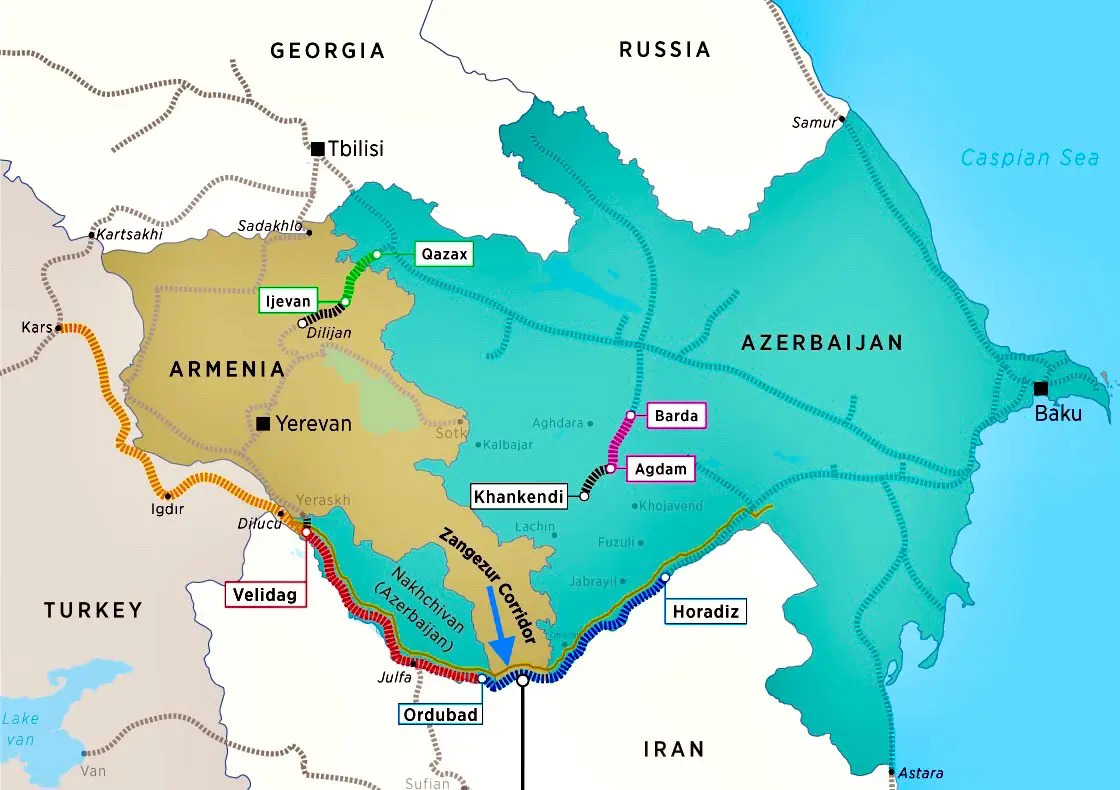Font size:
Print
Zangezur Corridor
Context: In a significant diplomatic development, Azerbaijani President Ilham Aliyev and Armenian Prime Minister Nikol Pashinyan held direct bilateral talks in Abu Dhabi on July 10, 2025.

More on News
- Hosted by the United Arab Emirates, this was the first mediator-free summit between the two leaders—a notable shift from Russia’s traditionally dominant role in the South Caucasus peace process.
- While no final peace agreement was signed, the discussions were described as constructive, with the Zangezur Corridor emerging as a key focus.
What Is the Zangezur Corridor and Why Is It Important?
- The Zangezur Corridor is a proposed 43-km route through Armenia’s Syunik province, linking Azerbaijan to Nakhchivan and Türkiye as part of the East–West Middle Corridor.
- For Azerbaijan, the corridor is both a strategic and economic imperative, with President Aliyev repeatedly asserting that its establishment is mandated under Point 9 of the 2020 Russia-brokered ceasefire.
- The corridor is increasingly seen as a game-changer for trans-Eurasian logistics. With an initial cargo capacity of 15 million tons, the Zangezur Corridor can:
-
- Shorten East–West trade routes.
-
- Enhance connectivity between Central Asia, the Caspian region, and Europe.
- Complement China’s Belt and Road Initiative (BRI) and Europe’s Global Gateway strategy.
- Azerbaijan has positioned the corridor as a key part of the Middle Corridor, aligning with efforts by Brussels, Beijing, and regional capitals to diversify trade flows.
What Are Armenia and Azerbaijan’s Positions on Corridor Governance?
- One of the summit’s critical developments was Armenia’s openness to innovative governance models.
- Deputy Foreign Minister Mnatsakan Safaryan stated Armenia is not opposed to outsourcing corridor management to a licensed international company, provided Armenian sovereignty is respected.
- This reflects a shift away from the original Russian model, where the route was to be managed by Russian FSB border guards.
- Western proposals now envision third-party logistical oversight, signaling a potentially more neutral and sustainable solution.
